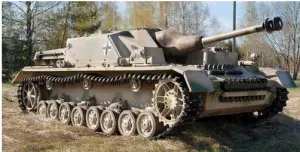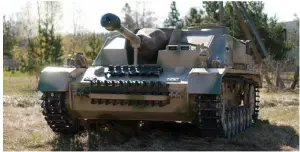Monthly Archives: October 2012
China’s “War with Japan” Theme Park
 The Atlantic’s Brian Fung picked up an amazing photo essay by Jason Lee of Reuters. Lee apparently visited a Chinese theme park that puts the attendees in the role of Mao Tse-Tung’s (we use Wade-Giles here, as used in Free China, so sue us) 8th Route Army during the Japanese occupation. Or, for some of them, in the role of Japanese occupiers (“You be the Japs!”)
The Atlantic’s Brian Fung picked up an amazing photo essay by Jason Lee of Reuters. Lee apparently visited a Chinese theme park that puts the attendees in the role of Mao Tse-Tung’s (we use Wade-Giles here, as used in Free China, so sue us) 8th Route Army during the Japanese occupation. Or, for some of them, in the role of Japanese occupiers (“You be the Japs!”)
The martial-themed park is ostensibly all about a war between China and Japan then, but Fung notes it has particular resonance with China and Japan at sword’s point over territorial disputes now. It doesn’t take much to amp up anti-Japanese sentiment in China, thanks largely to the barbarous conduct of the Japanese Army here and the reputation it earned. Most every other nation in East Asia has memories of Japanese occupation, and in no case are these positive enemies.
Ironically, most of the weight of the war in China was carried by Chiang Kai-Shek’s Nationalists and by independent warlords nominally subordinate to Chiang. Mao’s army fought the Japanese when it must, but mostly husbanded its strength for its real battle — the one with Chiang’s forces that would drive them across the Taiwan Straits in 1949.

A Chinese kid gets his Mao on. “Die, imperialist running dogs!” Well, the Japanese really were imperialists in those days. And a whole bunch of them died for it.
Fung’s introduction to the $80-million park follows. But you would be well advised to read the whole thing, and look at the other photos taken by Lee.
What would you get if you were able to mix Red Dawn with both a Civil War battle reenactment and Disneyland, and then translated the whole thing into Chinese? At the Eighth Route Army Culture Park in Shanxi province, named after the Communist military unit that fought behind Japanese lines in the 1940s, visitors can dress up as either Chinese or Japanese troops and pretend to blast away at each other with toy guns.
via Japan Invades China! … Year-Round, at This Theme Park in Shanxi – Brian Fung – The Atlantic.
Has the US, or any American entrepreneur, ever considered creating, say, a “Marines Culture Park” where you can play US Marine or Imperial Japanese soldier on Iwo Jima? We don’t think so. But if the answer is, as we think, “no,” the next obvious question is: should somebody?
Really don’t know what category to put this one in, so it’s going to drop into “uncategorized”. We’re still trying to figure out how to categorize a park for the general public that turns them into reenactors for a day.
Negligent Discharge — fortunately, in a comic
There’s few things more entertaining for a troop than laughing at the dysfunction of the institutional Army that the amazingly functional sharp-end troopies always seem to route around in order to accomplish the mission.
And there’s few things that get our dander up (as longtime readers have noticed) than negligent discharges. Awareness of muzzle and index finger would lead to a lot less stress. And the problem is never the guy who’s a novice to guns… it’s always the guy who will give you the benefit of his vast experience. Even when that is a null set.
There’s a longstanding Army joke about the 2nd Lieutenant who begins a sentence “In my experience…” the joke being that a second john usually has no experience and bears considerable watching (even combat-experienced NCOs seem to get a case of the dumbs when they pin the dreaded gold bar on).
The clearing barrels so beloved of the Army’s physical security apparatchiks,the military police, are a monumentally bad idea. It’s rooted, of course, in the fear or weapons among policymakers who are themselves unfamiliar with weapons. If you’re not going to train people to have perfect muscle memory with respect to firearms safety, you probably shouldn’t put them in the position to gratuitously handle their firearms and manipulate the controls of same several times a day. If you do, you’re going to hear a lot of bangs. And having been at Bagram and K2 at various times when someone ordered the usually gun-shy service support folks to start carrying guns, something that sounded like the OK Corral took place every meal time at the various chow halls around the ever-growing bases.
One reason there are lots of NDs in the conventional Army is that the consequences for an ND, if an American or Allied soldier isn’t hit or killed, are almost nonexistent. (There might be some light punishment for a private, but as rank goes up, consequences go down). Rather than holding leaders to a higher standard, as functional hierarchies must do, the Army functions with a sort of brain-damaged tiff on Hammurabi’s code, where the punishment depends not on the circumstances of the malfeasance but on the hierarchical status of the malefactor. As long as only equipment or a host country national is on the receiving end of the ND, no officer need fear punishment.
Make ND a career-consequences event, and the Courtney Massengales out there will learn to keep their “me, me, me” finger off the loud switch. Once you’ve made an example or two.
Thanks to frequent commented Medic09 for the tip to the strip, and do read DBS!
Some thoughts on Range

A Special Forces sniper engages a target during the night stress event at the 2010 USASOC Sniper Competition at Fort Bragg. US Army photo.
For the last 100 years, until quite recently, the range and striking power of small units’ individual and crew-served weapons hasn’t changed much even as the weapons have been revolutionized in portability, ergonomics, and targeting technology. This targeting technology is beginning to bleed over to range to some degree. The individual rifleman can make shots with an M4A1 or SCAR and a good optic (ACOG or Elcan) that even snipers did not take in the world wars, and the rifleman can dominate an open area in a way that only a machine gun crew could contemplate in the Great War, for example.
Why is range important? Because it drives development and planning of tactics, and determines who’s in the driver’s seat of any given engagement. In 1945, the insightful British officer Major General J.F.C. Fuller had this to say:
The weapon of superior reach or range should be looked upon as the fulcrum of combined tactics. Thus, should a group of fighters be armed with bows, spears, and swords, it is around the arrow that tactics should be shaped; if with cannon, muskets and pikes, then around the cannon; and if with aircraft, artillery, and rifles, then around the airplane.
Range, though, is not only the theoretical maximum capability of the weapons system (assuming proper sighting and laying-in and an optimum operator or crew), but the practical capability of the weapons system given the operator, conditions, weather and terrain at hand. Our rifleman are taking 500 and 600 meter shots with a 5.56mm carbine in Iraq and Afghanistan because they can. In the European environment of the world wars, even snipers were taking 200 and 300 meter shots, and in tropical triple-canopy jungle, a long shot is 100 meters.
There are other advantages, though, to having a long range weapon, beyond any intangibles like confidence. One is terminal ballistics. A weapon that can kill at 1000 meters can certainly kill at a lesser included range. (The problem, in fact, with the 600m M4 shot is not making the shot, but the weak terminal ballistics from the slowing 5.56 bullet). Another is accuracy. If you can strike a man’s-central-nervous-system size target at 600m, the weapons system will make 200m shots all day long.
The important measure of range is not an absolute, but a relative one. If you have superior killing range to your enemy, you have an open path to choose when to engage and disengage, and can refuse combat on the enemy’s terms and accept it — or force it -on yours.
 A good shooter knows the performance of his weapons system throughout its designed range — and even beyond. The average civilian shooter or police officer will never have an occasion to hit a man-sized target at 100m with a .45 M1911A1. The average guy probably doesn’t even think it’s possible. (It is, but not every shot with a GI gun. You need a tuned gun, but nothing exotic, to make it every-shot routine).
A good shooter knows the performance of his weapons system throughout its designed range — and even beyond. The average civilian shooter or police officer will never have an occasion to hit a man-sized target at 100m with a .45 M1911A1. The average guy probably doesn’t even think it’s possible. (It is, but not every shot with a GI gun. You need a tuned gun, but nothing exotic, to make it every-shot routine).
If you want to transcend the average, it can’t hurt to have some tools in your toolbox that the average guy can’t even imagine. And then hope your enemies are average guys.
NYPD detective retires after 44 revolver-totin’ years
 Detective John Roe started off as a police trainee and it took him two years — from 1968 to 1970 — to become a sworn police officer. Now, a mandatory retirement age (63, which he reaches October 31) will send him home, retired. His last day is October 26th, and he doesn’t quite know what he’ll do.
Detective John Roe started off as a police trainee and it took him two years — from 1968 to 1970 — to become a sworn police officer. Now, a mandatory retirement age (63, which he reaches October 31) will send him home, retired. His last day is October 26th, and he doesn’t quite know what he’ll do.
In the last 44 years he’s caught some thousand bad guys, and it’s not only his vocation, it’s his only hobby.
Roe is one of the last few hundred cops on the large (over 35,000 sworn officers) department to carry a revolver, a practice which is fading with his generation. Like most cops, he’s never needed to fire his main or backup gun, except for qualification.
He admits he’s somewhat of a “dinosaur”: He doesn’t carry a standard-issue 9 mm Glock semiautomatic but, along with about 300 colleagues, relies on an old-time “six-shooter” — a .38-caliber Smith & Wesson Model 10.
He also keeps a five-shot Smith & Wesson strapped to his ankle.
His is one of the families that marbles the NYPD through and through: his brother put in 37 years and retired as a captain, his father was a cop, and so were other relatives.
He’s planning to take a lot of cruises to take the edge off his retired boredom. Is there a TV show based on that premise, or what? Still, it couldn’t be a reality show: given the lack of serious crime on cruises, his Big-Apple-honed investigative skills are overmatch for public drunkenness or the occasional thieving steward.
One wonders who the other 300 wheelgun holdouts are, but they’re probably also “dinosaurs” like Roe. Yet there’s nothing wrong with a revolver, if you can hit with it. Not many serious social interactions (as opposed to IPSC stages or SFAUC practical exercises) take more than five well-aimed hits to bring to a happy conclusion. Sure, arm yourselves for the Zombie Apocalypse, but train like you’re going to solve an assailant problem with one fatal shot per assailant — and you will.
HMS Bounty Makes History Again…

On a better day — sunlight, calm seas, blue skies, full sails. She went down in the dark, visibility low in swirling precipitation, clouds and rain with reefed sails. RIP.
…and this time, again, in a negative way. A replica of the 18thCentury ship, made for a 1962 Marlon Brando movie, has foundered in the Atlantic off the ships’ graveyard of Point Hatteras; the US Coast Guard has rescued 14 and two further crew members are believed to have gone down with the ship. (This is preliminary information, and may change as more information becomes known).
The original Bounty, under the command of the supremely skilled but exceptionally cruel skipper William Bligh, was notorious for a mutiny that set Bligh and a few loyalists adrift in an open boat. The mutineers then sailed the ship to presumed safe haven, and wrecked her. In one of history’s greatest feats of seamanship (equaled, perhaps, by a couple of shipwrecked crews in World War II and Shackleton’s incredible voyage from Antarctic shipwreck to South Georgia Island), Bligh sailed the rude boat thousands of miles to safety at Kupang, and swore vengeance on the mutineers.
The event led to three books by a pair of World War I veterans, one each recounting the mutiny, the life of the mutineers on Pitcairn Island, and the hard voyage of Captain Bligh’s loyalists. The writers, Nordhoff and Hall, had served together in the Lafayette Escadrille. The most successful of the books, and the impetus for the Brando picture, was Mutiny on the Bounty.
Bligh’s vengeance never came to pass; by the time the outside world discovered the whereabouts of the mutineers’ island camp, ringleader Fletcher Christian and all but one of his mutineers had passed away, and the last one was an old man; Bligh had died, a high admiral and former governor of New South Wales in Australia (where he was on the receiving end of another muting, this time by colonists). Other mutineers, who had returned to Tahiti, were captured by HMS Pandora and those that survived the subsequent shipwreck of that vessel were court-martialed in London. Bligh testified in defense of four, who were acquitted. Three were found guilty without extenuating circumstances and hanged; others received royal pardons.
The replica Bounty was built in 1960 in Nova Scotia. She was made larger (to allow movie cameras to work) and was equipped with modern communications and survival gear, which came in handy when the ship became distressed in the night 90 miles off shore. The ship has starred in several films (not just 1962’s Brando Mutiny on the Bounty, but it’s been Captain Jack Sparrow’s Black Pearl in the Pirates of the Carribean series).
The Coast Guard rescue is one for the books, with an HC-130 providing on-site persistence and several Coast Guard helicopters winching up the 14 survivors and spiriting them to safety. The Coast Guard has not yet given up the ship for the survivors’ remaining two shipmates, although the odds are against their survival, even in immersion suits (which they were wearing). An HC-130 and HH-60 remain on the prowl for the missing.
CNN has more on the rescue from USCG sources:
Three people engulfed by the Hurricane Sandy-roiled Atlantic strove to reach a life raft after falling overboard Monday, the U.S. Coast Guard said. But only one of them made it.
When the HMS Bounty’s crew members realized their lives were in danger off the North Carolina coast in the dark morning hours, they made a short journey they hoped they’d never have to take — to two waiting life rafts. But of the 16 people on board, only 13 initially made it. Three crew members washed overboard, and only one of those three climbed into a lifeboat, Coast Guard Vice Adm. Robert Parker told CNN.
There was no Sunday Post
…this week. This one was added Monday afternoon through the magic of backdating.
Nothing new till tonight at best…
Sorry about that. Day-long briefing, this’ll be fun… not.
In the meantime we recommend you go to one of these excellent sites:
The Gun Wire for news headlines, Drudge style.
Forgotten Weapons for in-depth looks at oddities, also-rans and the occult history of firearms (don’t miss the related site GunLab, with even more tech, but much less frequently updated).
Sorry for not offering more options, but time is tight.
Or hit the Wednesday Weapons Website of the Week category links (there are two due to administrator headspace and timing) for more sites we like. We’ve added this post to those categories so the links should be Ranger-proof obvious.
Any self-defense weapon beats none, but…
 … we personally would reach for something with a little more range and a simpler point-and-click interface than the Wusthofs in the kitchen. And once the guy bugs out (assuming we uncharacteristically missed all three shots on Mozambique-drilling him), we’d let him keep bugging. In our house, burglars go to the drawer at the county morgue; outside, they’re Officer Friendly’s problem. We and Friendly are both down with that division of labor.
… we personally would reach for something with a little more range and a simpler point-and-click interface than the Wusthofs in the kitchen. And once the guy bugs out (assuming we uncharacteristically missed all three shots on Mozambique-drilling him), we’d let him keep bugging. In our house, burglars go to the drawer at the county morgue; outside, they’re Officer Friendly’s problem. We and Friendly are both down with that division of labor.
But a Portsmouth, NH man didn’t see it that way when some Wealth Redistribution Specialist broke into his home after midnight, with him and his wife inside. The Portsmouth Herald’s Elizabeth Dinan reports:
An Osprey Landing resident called police early Wednesday morning to report an intruder broke into her home and that her husband was armed with kitchen knives while chasing the burglar through some woods, say police.
The emergency call was made Oct. 24 at 12:20 a.m. by a Sanderling Road resident who said the burglar got into her home through a back door, according to the public police log. The resident said her husband grabbed three knives and “took off into the woods after” the burglar, the police report states.
While the guy’s ardor for assisting the authorities is certainly public-spirited, he committed several errors that could have been his undoing.
- You are cautioned not to “bring a knife to a gunfight” for a reason. A knife is, in fact, a deadly weapon, even in untrained hands. But a gun is trumps from all material standpoints: more reach, more power, faster second strike, more intimidation. If the burglar had been armed with a gun, this might have ended badly for the householder.
- When the defender leaves the house, the house is undefended. If the guy’s intent wasn’t mere burglary, he may be persistent enough to double back. If he had accomplices, they might just carry on with the intended crime in your absence.
- What are you going to do if you catch him, carve him up? Shoot him? Even though he’s the criminal and you’re the victim, there are actions you can take that reverse that relationship and land you in the dock. Defending your home, inside the home, is a pretty defensible position most places.If they find you on a high hill, holding the severed head of the burglar and baying at the moon, you as good guy are a harder sell.
- You might be planning to intimidate him into waiting for police, but the kind of guy that burgles an occupied residence is more likely to be a drug user than not, and is not guaranteed to be rational. He is certainly more prone to violent criminality than you are. Then what?
- You are asking, in running through suburban woods armed like the antagonist in an October slasher movie, for the responding cops to commit a blue-on-YOU error.
So what’s the right thing to do? Use the force necessary to make him leave your home. With most burglars, it won’t take all that much. With some, you’re just going to have to kill them. But if your burglar bugs out, let him go.
The story continues:
The suspect was described as about 6 feet tall, wearing a black hooded sweatshirt with black and gray pants, and fled through some woods toward Blue Heron Drive. A police K-9 team followed a scent toward Spinnaker Point, then Market Street and Woodbury Avenue, according to the police log.
We know the area. Those last are busy commercial streets, and probably where the burglar’s car or accomplice was. He’s still on the loose, but undoubtedly not for long. Anyone bold enough to burglarize occupied homes will soon be caught — or shot.
People beat up the cops about burglary closure rates, but the fact is, although no one gets arrested for most burglaries, a burglar can’t live (or more usually, support his enjoyment of drugs) on one burglary. He has to do it over and over again. All career burglars get caught, and spend much of their lives in prison. This doesn’t deter them for several reasons, but principally because they have low intelligence and poor impulse control, and because penalties for residential burglaries are trivial.
As an aside, we note that we have yet to read a story about some good or public-spirited deed undertaken by a young man in a hoodie.
Portsmouth Police Lt. Mark Newport had a few words of advice for people like this householder:
He also advised armed and unarmed citizens not to pursue suspects. “Just call the police.”
When they’re in your house, we reiterate, they’re your problem. When they’re back out and on the lam, they’re society’s problem, and society’s tool is the police force. And don’t get downhearted if he doesn’t get bagged tonight. He’s gonna get bagged pretty soon — nature of the business.
For the Advanced German WWII collector
Not many collectors have a 75mm AT/multipurpose gun. Much less, mounted in an iconic and exotically rare armored vehicle with combat provenance.
German Stug IV ( Sturmgeschütz IV ), WW2. in Military Vehicles | eBay Motors.
There are a few problems with this wonder weapon. For one, they want a hell of a lot of money for it. For another, it appears to be missing its drivetrain (that’s our takeaway from the posting, presumably made by a Latvian in unfamiliar English).
Finally, it’s in Riga, Latvia, so you can’t just fly in and drive it home (well, the no motor thing militates against that, anyway).
Here’s the listing’s description of the assault gun’s history, prior to its 2006 rediscovery and (partial?) restoration:
Manufactured in Germany in September – October 1944.
Manufacturer: KRUPP – GRUSON WERK AG, Magdeburg – Buckau
This tank took part in operations in 2.WW, in the 912-th Sturmgeschutz
Abteilung, 2 Batarie,on the territory of Latvia, Courland Pocket.
In March, 1945, was hit by anti-tank artillery at the edge of the swamp
in the western part of Courland Pocket.
Crew evacuated.
Engine and transmission dismantled repaired by squadron.
No motor and gearbox on the tank.
During the retreat of the German units had been undermined.
 This model, the Sturmgeschutz IV, was a result of production delays with the obsolete Panzer III hulls needed for the standard StG III. (The production delays came about when the 8th Air Force and/or RAF Bomber Command blew up the plant). So StG III superstructures were fitted to Pz IV chassis, yielding the StG IV at the end of 1943. This particular example was one of 1,139 produced, is one of three known survivors (the other two are in Poland), and was probably made in 1944.
This model, the Sturmgeschutz IV, was a result of production delays with the obsolete Panzer III hulls needed for the standard StG III. (The production delays came about when the 8th Air Force and/or RAF Bomber Command blew up the plant). So StG III superstructures were fitted to Pz IV chassis, yielding the StG IV at the end of 1943. This particular example was one of 1,139 produced, is one of three known survivors (the other two are in Poland), and was probably made in 1944.Sturmgeschütze were a uniquely German weapon, meant to provide tracked, armored artillery that could match tanks for speed, mobility, and survivability, by being built on the same chassis. The Russians liked the idea enough to copy it in their SU series weapons. The western allies did make SP artillery on tank chassis, but for a very different reason: they had a ton of tank chassis on hand. The western SPs, of which the M7 “Priest” was typical, didn’t have the heavy frontal armor, low profile, and overhead armor of the German Sturmgeschütze or their Soviet descendants.
 After the war, the concept died a fairly natural death. Armies could build enough tanks for reduced peacetime requirements, so they didn’t need assault guns as tank substitutes or supplements. And they could design purpose-built artillery pieces and build as many as reduced peacetime tables of organization and equipment demanded.
After the war, the concept died a fairly natural death. Armies could build enough tanks for reduced peacetime requirements, so they didn’t need assault guns as tank substitutes or supplements. And they could design purpose-built artillery pieces and build as many as reduced peacetime tables of organization and equipment demanded.
With only three examples extant, and two of them held by museums, this is a truly unique military vehicle. This is not its first rodeo with eBay — it was offered in 2011, at an even higher price, and did not sell then.
For more information:
http://www.wwiivehicles.com/germany/self-propelled/stug-iv.asp
ttp://www.achtungpanzer.com/sturmgeschutz-iii-sturmgeschutz-iv.htm
Comment Spam beaten… for now
It took the advice of a more experienced blogger and two plug-ins, but looks like thousands of attempts to spam the comments are being defeated, and legit comments are being allowed. The good news is: less time filtering through hundreds of daily spams to find our actual commenters. The bad news: we’re missing the insincere positive reinforcement from all the spams (usually, they contain generic flattery, to try to get admins to let them through. We’ve been reading a lot of paean to our wondrousness over the last 10 months, so that you don’t have to.
If you’re a legit commenter, and having trouble, we’ll get an email address up shortly. No doubt we’ll get our share of spam there! Some of you regulars know an email address already, fine to keep using it.

Kevin was a former Special Forces weapons man (MOS 18B, before the 18 series, 11B with Skill Qualification Indicator of S). His focus was on weapons: their history, effects and employment. He started WeaponsMan.com in 2011 and operated it until he passed away in 2017. His work is being preserved here at the request of his family.


